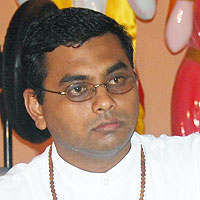From a satsang with Pt. Umadutt Maharaj, Spiritual Leader, SWAHA Bhakti Jyot Mandali
In the world’s existence, the human body stands as a unique and precious gift. Our time on Earth is fleeting, urging us to use it wisely and purposefully. This life is an opportunity to realise our true nature, encapsulated in the Vedic declaration, “Aham Brahmasmi” – I am One with the Divine. Recognising the human form as a rare and divine gift from God, we must endeavour to make our lives a worthy offering back to the divine.
The Bhagavad Gita offers profound wisdom on this topic. Shree Krishna advises Arjuna: “Man elevates himself by himself; he degrades himself by himself. One is one’s own friend, one is one’s own enemy.” This verse underscores the transformative power within us. It is a call to recognise the sanctity of our human form and to strive for spiritual elevation.
Human existence is ephemeral, as elucidated in Chapter 2 of the Bhagavad Gita. Shree Krishna explains that the human body undergoes six stages: existence, birth, growth, maturity, decay and death. This cycle is universal, affecting every living entity. The recognition of this transient nature should inspire us to make the most of our human journey, avoiding a life of regret and the potential descent in the cosmic order.
Out of the 8.4 million species, the human form is considered the pinnacle of creation. It is the only form that possesses the capacity for self-analysis, rational thought and spiritual pursuit. Even the Gods aspire to attain human form for its unparalleled potential in spiritual advancement. The human body serves as a chariot, not merely for navigating the physical world but for embarking on an inner spiritual journey.
Shree Raam describes the nature of the human form as composed of three bodies: the physical body (sthula sharir), the subtle body (sukshma sharir), and the causal body (karana sharir). The physical body consists of five sheaths or layers, known as koshas. The outermost sheath, the anamaya kosha, is the food sheath, representing our need for nourishment. The physical body is endowed with five sensory organs (gyaan indriyas) and five organs of action (karma indriyas), which facilitate our interaction with the world.
The subtle body comprises the manomaya kosha, the vigyaanomaya kosha, and the praanomaya kosha. The praanomaya kosha encompasses the breath cycle and vital energy, essential for the functioning of both physical and subtle bodies. The manomaya kosha, or mind sheath, includes the five states of the mind: raving, oscillating, forgetful, one-pointed, and restrained. The vigyaanomaya kosha, the sheath of knowledge, houses both the unenlightened and enlightened mind and intellect.
At the innermost level is the aanandamaya kosha, the blissful sheath, residing within the causal body. This is the domain where yogis connect with the divine secrets of the universe. Through meditation and devotion, we can transcend the physical and subtle bodies, reaching the blissful state of the aanandamaya kosha. The ultimate realisation of “Aham Brahmasmi” brings us into oneness with the divine.
The physical body, likened to a chariot, facilitates our journey through these layers to our innermost being, where the “antar jyot” – the divine light of the Paramatma, resides. It is the soul within the aanandamaya kosha, our true essence.
In conclusion, the human form is a sacred vessel, bestowed upon us for the pursuit of spiritual enlightenment. Our ultimate responsibility is to realise our true nature and harmonise our lives with the divine. Let us honour this gift by leading lives of purpose, awareness and spiritual growth.



